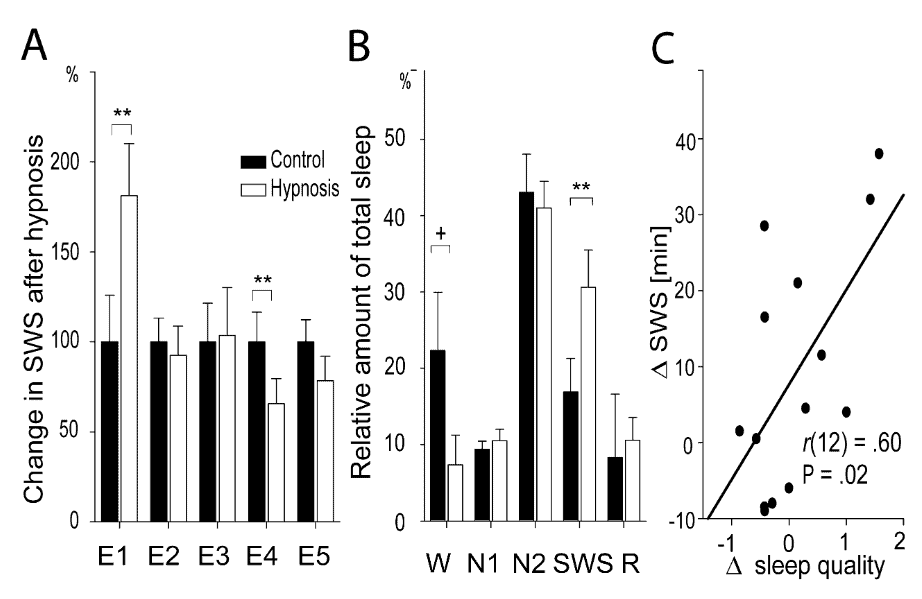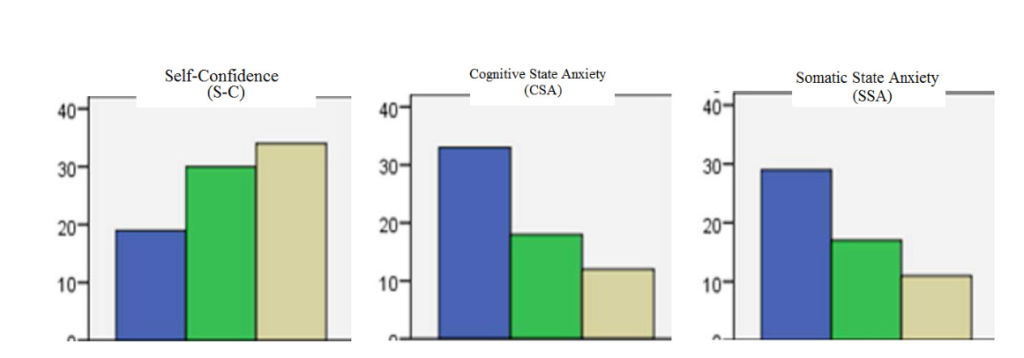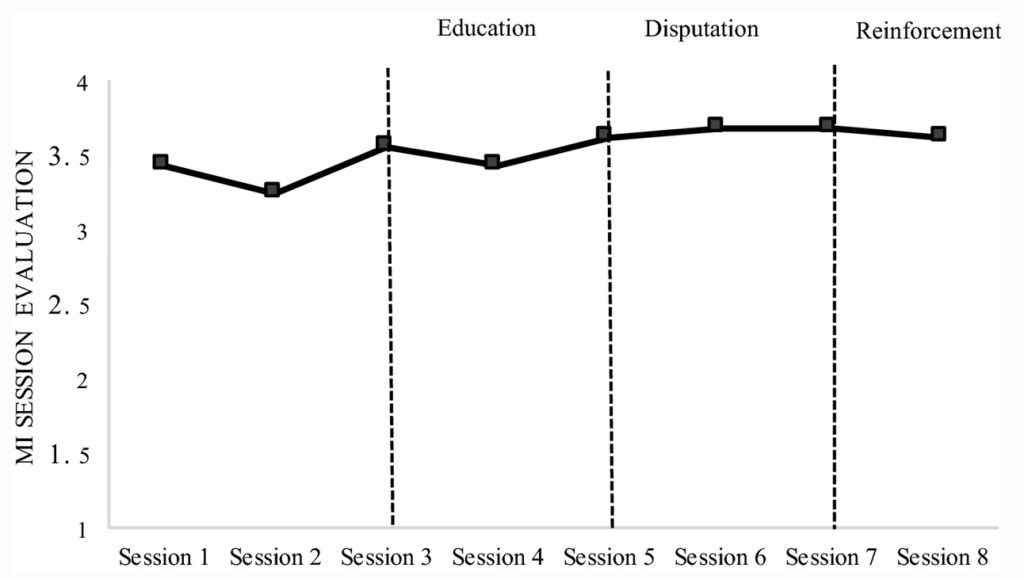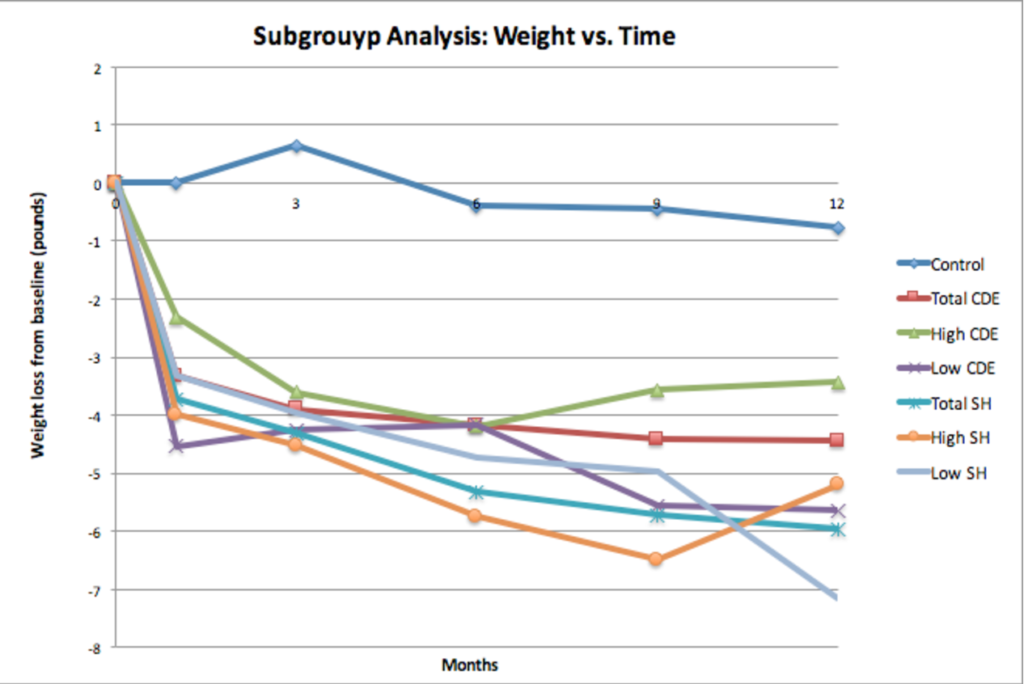
Annemieke Van Dam
(DipCAH, RSH.DipPH, WCA Cert. Wellness Coaching)
This is article two of a three-part series, which discusses the different types of therapies. Today we’ll be talking about:
- Hypno-analysis
- Havening
- Neuro-linguistic Programming (NLP)
- Primers
- Rational Emotive Behavioural Therapy (REBT)
- Regression Hypnotherapy
- Rapid Transformational Therapy (RTT)
- Self-hypnosis
If you are currently feeling that you might need some assistance and talk to a mental health expert, we suggest reading the article to see which approach you might prefer.
Hypno-analysis
Hypno-analysis originated from the Freudian period and has continued to be developed with the contribution of various psycho-analysts.
Hypno-analysis is the use of psychoanalysis techniques in an altered state of hypnosis. It is also known as analytic hypnotherapy or analytic hypnosis. Hypnoanalysis is used:
- In conversation (using conversational hypnosis, the therapist can guide and encourage using hypnotic suggestion within the narrative of the session).
- In a very light altered state (e.g., relaxing and comfortable, the individual may experience less distraction and be more “present” and “mindful”).
- In a mild state of trance or meditation (the individual may be able to remember situations or visualise situations or memories more easily to analyse them).
- In a medium state of trance (the unconscious mind is more dominant and therefore the deeper emotional responses, sometimes repressed by fear or anxiety mechanisms are more accessible).
- In a deep trance (psychoanalysis can access deep trauma and repressed memory. This is used rarely and with safeguards because of the danger of false memory syndrome).
RELATED — Introduction to Hypnotherapy: Mind-Body Intervention Technique
Hypnoanalysis helps to uncover, understand and resolve problems
It takes advantage of a phenomenon known as “memory re-consolidation”, which is a research proven psychological event that occurs when a person is able to simultaneously process and replace a past “causative” event with a more useful “present context” thought.
This then allows the new process thought to overwrite the old one. In this way the mind is able to free itself of any behaviours that the old experience may have been leading to.
Hypno-analysis helps with:
- Anxiety
- Depression
- Fears
- Phobias
- Other primary health problems (disorders, substance abuse, sleep issues, etc.)

Source: Cordi, Maren & Schlarb, Angelika & Rasch, Björn. Deepening Sleep by Hypnotic Suggestion. Sleep. (2014)
Havening
Havening is a newer alternative therapy technique that incorporates distraction, touch, and eye movements.
Developed by Dr. Steven Ruden and Dr. Ronald Ruden in 2001, it’s goal is to reduce anxiety and distress associated with negative memories. This is achieved by the use of therapeutic touch, which can help treat mental health symptoms by changing pathways in the brain linked to emotional distress.
The theory is based on the idea that touch can help chemically alter our brain to neutralise trauma. This, in turn, helps us relax and detach from an upsetting memory or experience, essentially creating a safe mental “haven”.
Havening is a new alternative therapy
While some studies suggest it may help with pain and anxiety, well-designed placebo-controlled trials have not proven that it works.[3]
Neuro-linguistic programming (NLP)
NLP was co-founded by Richard Bandler and John Grinder in the 1970s and was modeled on the work of Milton Erickson, Gregory Bateson, Fritz Perls and Virginia Satir.[4]
NLP uses perceptual, behavioural, and communication techniques to make it easier for people to change their thoughts and actions. It endeavours to detect and modify unconscious biases or limitations of an individual’s map of the world.
RELATED — What is Neuro-Linguistic Programming and Does It Work?
NLP is not hypnotherapy. It applies the conscious use of language to bring about changes in someone’s thoughts and behaviours. Examples of techniques include:
- Anchoring (turning sensory experiences into triggers for certain emotional states).
- Rapport (the practitioner tunes into the person by matching their physical behaviours to improve communication and response through empathy).
- Swish pattern (changing patterns of behaviour or thought to come to a desired instead of an undesired outcome).
- Visual/kinesthetic dissociation (VKD) (trying to remove negative thoughts and feelings associated with a past event).
Scientific research on the effectiveness of NLP has produced mixed results.[4]
A study published in the journal of Counselling and Psychotherapy Research found that patients’ psychological symptoms and quality of life have improved after NLP when compared with a control group.

Source: Savardelavar, Meisam and Garry Kuan. “The Use of Neuro-Linguistic Programming as an Educational-Therapeutic Programme: Two Case Studies.” (2017)
Conversely, a study published in The British Journal of General Practice of 10 available studies on NLP concluded there was little evidence for the effectiveness of NLP.[5]
Primers
Primers are pre-recorded audio hypnosis tracks. Unlike other types of hypnotherapies, they allow an individual to use hypnosis without a clinical hypnotherapist or trained hypnotist being present.
Primers guide the recipient into a hypnotic state to help them make positive life changes in comfort from anywhere.
Primers can be accessed or purchased online and can help individuals to make the changes they want. The disadvantage of primers is that they are not personalised to the recipient’s specific circumstances and only offer hypnosis, eliminating the application of other therapies.
Primers can be helpful for those who do not wish to meet a hypnotherapist face to face.[6]
Rational Emotive Behavioural Therapy (REBT)
Rational emotive behaviour therapy (REBT) is a type of cognitive behavioural therapy (CBT) developed by psychologist Albert Ellis in 1957.
It is an action-oriented approach that helps people deal with irrational beliefs and learn how to manage their emotions, thoughts, and behaviours.
When people hold irrational beliefs about themselves or the world, problems can result. REBT helps people recognise and alter those beliefs and negative thinking patterns in order to overcome psychological problems and mental distress.
The main goal of REBT is to help people respond rationally to situations that would typically cause stress, depression, or other negative feelings.
This means that when faced with this type of situation in the future, the emotionally healthy response would be to be aware that it is not realistic to expect success on all occasions and to learn from the situation and move on.
REBT has been shown to help with a variety of conditions, including:
- Anxiety and distress
- Depression
- Disruptive behaviour in children
- Obsessive-compulsive disorder (OCD)
- Social anxiety disorder
- Psychotic symptoms
- Performance[7]

Source: Wood, A., Mack, R. & Turner, M. Developing Self-determined Motivation and Performance with an Elite Athlete: Integrating Motivational Interviewing with Rational Emotive Behavior Therapy. (2020)
A systematic review and meta-analysis published in 2018 showed that REBT is effective for a variety of situations and mental health conditions and may lead to lasting changes in those who undergo this type of therapy.[8]
Regression hypnotherapy
Regression hypnotherapy was developed in the late 1950s by Alexander Cannon and became more prominent in the 1970s and 1980s.[9]
Regression therapy is a form of hypnotherapy that helps individuals access their subconscious minds through hypnosis.
It combines psychoanalysis and hypnotherapy to identify past events, memories, and trauma that could be negatively impacting an individual’s present life.
There are several types of regression that can be used in hypnotherapy, including:
- Age Regression (this involves taking the individual back to a specific age or time period in their life to explore a particular issue or experience).
- Past Life Regression (this technique involves exploring past lives to gain insight into current life issues or patterns).
- Inner Child Regression (this technique involves revisiting childhood memories to address unresolved emotional issues).[10]
The effectiveness of regression hypnotherapy is stated to be in the eye of the beholder. This is because of the risk of false memories in the application of hypnosis.[11]
Rapid Transformational Therapy (RTT)
Rapid Transformational Therapy is a therapy that claims to offer fast and achievable results by combining the best of neurolinguistic programming, hypnosis, cognitive behaviour therapy, and psychotherapy.
RTT uses hypnosis to access the subconscious mind, which will reveal, reprogramme and change restricting beliefs with command therapy and positive reinforcement.
Results are achieved when the limiting beliefs, mental/physical issues, and behaviour patterns are identified and then treated.
Rapid Transformational Therapy helps with:
- Boosting our confidence and improving communication skills
- Healing from past traumas
- Improving how we perceive and value ourselves
- Giving us clarity in refining and pursuing our life goals
- Healing from abuse
- Quitting addictions
- Fighting anxiety, depression, insomnia, and stress
- Reprogramme unhealthy eating habits and maintain a normal weight and body image
Research on RTT is limited due to its recent emergence
Some studies and anecdotal evidence suggest it is effective in treating a range of psychological and physical conditions.
One study published in the Journal of Evidence-Based Integrative Medicine in 2018 examined the effectiveness of RTT in treating chronic pain.
Results showed a statistically significant reduction in pain severity, pain interference, and depression, suggesting that RTT may be a promising treatment for chronic pain.
RELATED — Introduction to: Depression
Another study published in the Journal of Mind-Body Regulation in 2018 examined the effectiveness of RTT in treating anxiety and depression. Results showed a statistically significant reduction in anxiety and depression symptoms, as well as improvements in self-esteem and quality of life.
Anecdotal evidence from RTT practitioners also suggests that RTT can be effective in treating a range of conditions, including phobias, weight loss, smoking cessation, and fertility issues.
Self-hypnosis
Self-hypnosis is thought to originate prior to early Greek and Egyptian times and was made more popular in the 1800s by Franz Mesmer who was thought to have himself practiced self-hypnosis and introduced it to others.
Self-hypnosis involves becoming highly focused and absorbed in the experience while giving ourselves positive suggestions about ways to reach our goals.
Self-hypnosis is an individual practice
Self-hypnosis enables us to have better control of our thoughts and reactions while enjoying the physical and emotional benefits of the relaxation techniques.

Source: Levenson, Mia et al. “Efficacy of Self-hypnosis in Overweight and Obese Type 2 Diabetics : A Randomized Clinical Trial.” (2018).
Self-hypnosis enables us to use that power to learn new skills more easily, perform athletic feats, be more creative, tolerate pain, and face the unknown with greater confidence. It is a mechanism for learning to focus and motivate ourselves, be more self-aware, and make the best use of our innate skills.
Self-hypnosis does not work for everyone, but is simple and safe to administer. If you would like to try it, we suggest to:
- Find a quiet and undisturbed place to relax and get comfortable.
- Relax using a hypnotic induction like progressive muscle relaxation.
- Introduce a suggestion for a change.
- Return to your usual level of alertness.[12]
Many successful individuals are usually intensely focused on what they’re doing and what they’re trying to accomplish, and self-hypnosis is all about developing and using our focus in a goal-directed fashion.
Related Questions
1. What is the difference between EMDR and havening?
EMDR utilises bilateral stimulation by waving a hand or wand in front of the client’s eyes whilst the client is bringing to mind an unwanted thought or event with a view to reorganising the thoughts or memories so they are less intense. EMDR may also include the client tapping themselves.
In contrast, Havening is a psychosensory (touching) therapy, which involves the client carrying out hand movements on their body to decode emotions or memories
2. How effective is self-hypnosis?
Psychologists, Doctors Brian Alman and Peter Lambrou state that self-hypnosis takes account people’s perceptions and their own experiences and that it has been found to be successful with nearly everyone, but that it does require practice and repetition.[13]
If you would like to read the first article, you can find it here — Types of therapy: which one is right for you? (Part 1)
Annemieke Van Dam is the founder of Livewell Hypnotherapy, and is a hypnotherapist and life and wellness coach operating onsite and online, New Zealand wide and internationally.
Prior to becoming a hypnotherapist, Annemieke was a manager, advisor and consultant working in the corporate, education and local government sectors in the areas of health, safety and wellbeing.
After experiencing personal challenges, Annemieke was determined to establish her practice and help others in a more direct and meaningful way. Now, she is looking to reach and help more people on their journey to wellbeing.
References
(1) Psychoanalysis Center (nd). Hypno-analysis or Analytical Hypnotherapy in Edinburgh. Retrieved from http://www.psychoanalysis.center/analyst/hypno-analysis
(2) Tranceform Psychology. (nd). Hypnoanalysis. Retrieved from https://www.tranceformpsychology.com/psychological-therapy/hypnotherapy/hypnoanalysis.html
(3) Scott, J. A. (1984). History of medical hypnoanalysis. Medical Hypnoanalysis, 5(4), 124–151.
(4) ANLP International CIC, (nd) Definition of NLP. Retrieved from Definition of NLP – The Association for Neuro Linguistic Programming (anlp.org)
(5) Kandola, A. (2023). What is NLP and what is it used for? Retrieved from Neuro-linguistic programming (NLP): Does it work? (medicalnewstoday.com)
(6) Primed Mind. (nd) Types of Hypnosis and Hypnotherapy Techniques. Retrieved from Types of Hypnosis & Hypnotherapy Techniques (primedmind.com)
(7) Kendra, C. (2023). What is Rational Emotive Behaviour Therapy (REBT). Retrieved from Rational Emotive Behavior Therapy: Definition, Techniques, and Efficacy (verywellmind.com)
(8) David, D, Cotet, C, Matu, S, Mogoase, C, Stefan, S. 50 years of rational-emotive and cognitive-behavioural therapy: A systematic review and meta-analysis. J Clin Psychol. 2018; 74: 304–318. https://doi.org/10.1002/jclp.22514
(9) Tomlinson, A. and Mack, P. (2018). ‘Regression Therapy’. Psi Encyclopedia. London: The Society for Psychical Research. Retrieved from Regression Therapy | Psi Encyclopedia (spr.ac.uk)
(10) Butler, S. (2023) What is Regression Hypnotherapy and How Does it Work? Retrieved from What is Regression Hypnotherapy and How Does it Work? – (helpforhypnotherapists.com)
(11) Loggins, B. (2021). What is Regression Therapy. Retrieved from Regression Therapy: Definition, Types, Techniques, and Efficacy (verywellmind.com)
(12) Raypole, C. (2021). Yes Self- Hypnosis Can Really Work – Here’s How To Give It a Try. Retrieved from Self-Hypnosis: What It Is & How to Do It (mindsethealth.com)
(13) Alman, B. M. Lambrou, P. (1992). Self-Hypnosis The Complete Manual For Health and Self-Change. Brunner-Routledge. New York.






